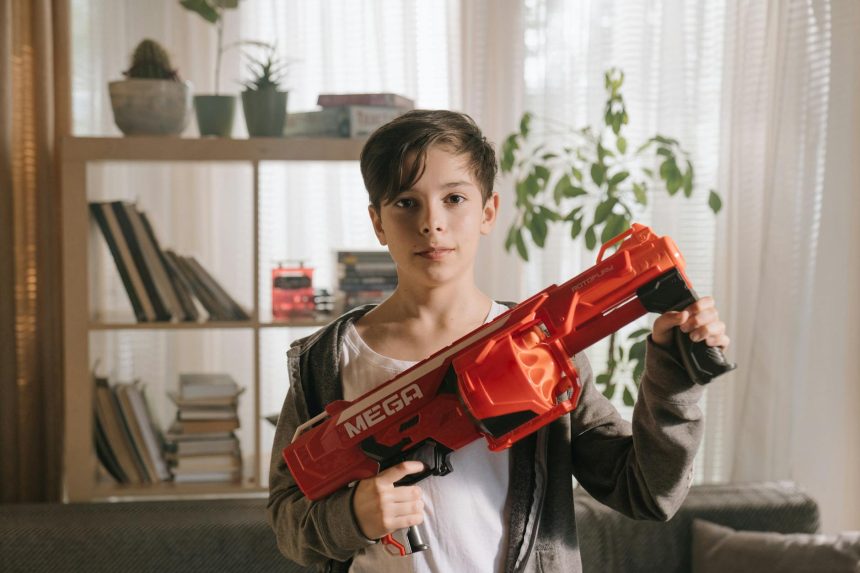# On-Shot Mechanics: What They Are & How They Work
Ever wondered about those moments in games where a sudden boost or a critical debuff seems to appear out of nowhere, precisely when you need it most? This isn’t magic; it’s often the result of what’s known as “On Shot” mechanics. These powerful game design elements can dramatically alter the flow of combat, and understanding them is key to mastering many of your favorite titles. But what exactly are On Shot mechanics, and how do they function under the hood? Let’s dive deep into this fascinating aspect of game development.
## The Core Concept: Instantaneous Impact
At its heart, an “On Shot” mechanic is a game system that triggers an effect *at the exact moment* a projectile is fired, or a weapon successfully hits a target. This is distinct from effects that might apply *after* a hit has landed and been processed, or buffs that last for a set duration. The “shot” itself is the trigger.
Think of it like this: You pull the trigger, and *bam*, something happens. This could be a buff to your own character, a debuff applied to an enemy, a special ammunition type being loaded, or even a visual flair that accompanies your attack. The key is the immediacy – the effect is intrinsically tied to the action of firing or hitting.
### Why “On Shot” Matters in Gameplay
The “On Shot” mechanic introduces a layer of tactical depth that goes beyond simple point-and-shoot gameplay. It allows for:
* **Reactive Play:** Players can time their abilities or weapon switches to capitalize on these instantaneous effects.
* **Strategic Buffing/Debuffing:** Enemies might have specific weaknesses that can be exploited by firing certain weapons or at certain times.
* **Dynamic Combat:** The battlefield can change rapidly as On Shot effects cascade, forcing players to constantly adapt.
## How On Shot Mechanics Are Implemented
Game developers utilize various methods to bring these instantaneous effects to life. While the specifics can vary wildly between different games and engines, the underlying principles often involve:
### 1. Event-Driven Triggers
The most common implementation relies on event-driven programming. When a player initiates a firing sequence (the “shot” event), the game engine listens for this specific event. Upon detection, it then checks a series of conditions:
* **Is the player character equipped with a weapon that has an On Shot effect?**
* **Does the current game state meet the criteria for the effect to trigger?** (e.g., Is there a specific enemy type in range? Is a certain buff already active?)
If all conditions are met, the associated effect is immediately applied. This can be a simple stat modification or a more complex animation and particle effect.
### 2. Snapshotting Values
As mentioned in the press release, some mechanics will “snapshot” values at the time of firing. This is a crucial detail for understanding how certain buffs and debuffs behave.
**What does “snapshotting” mean?**
Imagine you have a buff that increases your weapon damage by 50%. If this buff is snapshotted *when you fire*, then even if that buff wears off *before* your bullet hits the target, the damage calculation for that specific shot will still use the 50% bonus. Conversely, if a debuff is applied to an enemy *after* you fire but *before* your projectile hits, and the damage calculation uses snapshotted values from *before* the debuff, the target won’t receive the debuff’s impact on that particular shot.
This snapshotting behavior adds another layer of strategic consideration, particularly in fast-paced games where buffs and debuffs might be constantly applied and removed. Players need to understand when their effects are locked in to maximize their damage output or defensive capabilities.
### 3. Projectile-Based Effects
In some cases, the effect isn’t just tied to the firing action but is intrinsically linked to the projectile itself. This can manifest in several ways:
* **Ammunition Types:** Firing a special type of ammo might be an On Shot mechanic. For example, firing a “piercing round” might be an On Shot effect that allows the projectile to pass through multiple enemies.
* **Status Ailments:** Some weapons might have a chance to apply a status ailment (like poison or stun) directly on hit, and this application is considered an On Shot mechanic.
## Common Examples of On Shot Mechanics in Games
You’ve likely encountered On Shot mechanics in various forms without even realizing it. Here are a few common examples:
* **Critical Hits:** While often a passive chance, many games implement critical hits as an On Shot effect. When you fire, the game checks if it’s a critical hit, and if so, applies a damage multiplier or special visual effect instantaneously.
* **Buffs on Kill:** A common mechanic is gaining a temporary buff (like increased movement speed or reload speed) *immediately* after securing a kill. This is an On Shot effect triggered by the successful elimination of an enemy.
* **Charged Shots:** Some weapons require charging before firing. The moment you release the charge and fire is the “shot,” and the effects of that charge (e.g., increased damage, area of effect) are applied at that instant.
* **Weapon Swapping Perks:** In some shooters, quickly swapping to a secondary weapon after a kill might grant a temporary damage boost. The act of firing the secondary weapon immediately after the kill is the On Shot trigger for this perk.
* **Elemental Ammunition:** Firing a weapon loaded with elemental rounds (fire, ice, lightning) might apply that element’s effect on impact. The firing of the projectile is the trigger for the elemental damage or status effect.
## The Impact on Player Strategy and Skill Ceiling
On Shot mechanics are not just flavor; they are instrumental in shaping a game’s strategic depth and skill ceiling.
### 1. Timing is Everything
Mastering On Shot mechanics often boils down to impeccable timing. Players who can anticipate enemy movements, manage their buffs, and coordinate their attacks with the precise moment an On Shot effect will trigger will consistently outperform those who don’t.
* **Example:** In a game with a “damage boost on reload” On Shot mechanic, a skilled player will reload *before* engaging a tough enemy, ensuring their first shots are amplified.
### 2. Resource Management
These mechanics can also tie into resource management. Perhaps a powerful On Shot ability consumes a special energy resource, or it’s only available after a cooldown. Players must decide when the optimal moment is to expend these resources for maximum impact.
### 3. Understanding Game Systems
The “snapshotting” aspect, in particular, highlights the importance of understanding the underlying game systems. Knowing whether your damage buff is snapshotted on fire or on hit can drastically change how you approach combat encounters.
* **For example, if a buff is snapshotted on fire:** You want to activate the buff *before* firing your most powerful shots.
* **If a buff is applied on hit:** You might want to ensure your projectile lands on a target already affected by other debuffs to maximize its effectiveness.
This deep understanding separates casual players from elite performers.
## Developer Considerations for On Shot Mechanics
For game developers, implementing On Shot mechanics involves careful design and balancing.
### 1. Clarity and Feedback
Players need clear visual and auditory feedback to understand when an On Shot mechanic has triggered. Without this, the mechanic can feel arbitrary or confusing.
* **Visual Cues:** Special particle effects, color changes on weapons or projectiles, or UI indicators can signal an active On Shot effect.
* **Audio Cues:** Distinct sound effects for buffs, debuffs, or successful triggers can provide immediate information.
### 2. Balancing and Fairness
On Shot mechanics, especially those that provide significant advantages, must be carefully balanced to prevent them from becoming overpowered or exploitative. This involves:
* **Cooldowns:** Limiting how often an effect can be triggered.
* **Resource Costs:** Requiring players to expend energy, ammo, or other resources.
* **Counterplay:** Designing mechanics that allow opponents to react to or mitigate the On Shot effects.
### 3. Performance Optimization
Ensuring that these instantaneous effects are calculated and applied without causing performance drops is crucial, especially in fast-paced multiplayer games. Efficient coding and optimization are key.
## The Future of On Shot Mechanics
As game development continues to evolve, we can expect On Shot mechanics to become even more sophisticated. We might see:
* **Chained On Shot Effects:** Where one On Shot trigger can lead to another, creating elaborate combat combos.
* **Environmental Interactions:** On Shot effects that trigger based on environmental factors or player proximity to certain objects.
* **AI-Driven Mechanics:** More dynamic and adaptive On Shot effects that respond intelligently to player actions.
## Conclusion
On Shot mechanics are a subtle yet powerful force in modern game design. They transform simple actions into moments of strategic significance, rewarding players who understand their intricacies and master their execution. Whether it’s a critical hit that turns the tide of battle or a perfectly timed buff that secures a victory, these instantaneous effects add a thrilling layer of depth to our favorite games. By paying attention to the precise moment of firing or impact, and understanding concepts like snapshotting, players can unlock new levels of mastery and truly elevate their gameplay.
***
**Copyright © 2025 thebossmind.com**
**Source Links:**
1. [https://www.ign.com/wikis/game-mechanics](https://www.ign.com/wikis/game-mechanics)
2. [https://www.gamedeveloper.com/design/what-is-game-design-mechanics](https://www.gamedeveloper.com/design/what-is-game-design-mechanics)
Featured image provided by Pexels — photo by cottonbro studio





